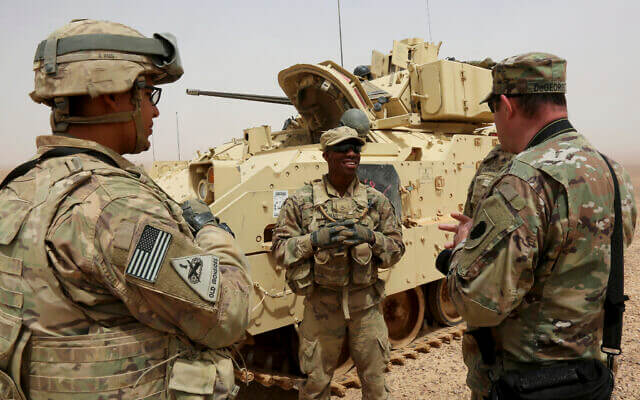By: Micaela Burrow, Daily Caller News Foundation
The U.S. military’s assessment of the drone attack that killed three U.S. troops in Jordan on Jan. 28 reached an initial determination that appears to contradict early speculation on how the enemy drone evaded detection, The Washington Post reported Tuesday.
U.S. defense officials initially speculated that the Iran-backed aerial vehicle confused Tower 22 radar systems because it homed in on the base around the same time a U.S. Army drone was also returning to base. Early findings of the military’s incident investigation into the deadly attack, however, suggest the explosive-laden drone flew too low to register on the base’s detection systems, the Post reported, citing a U.S. defense official with direct knowledge of the assessment.
The drone was missed “due to its low flight path,” the defense official told the Post on condition of anonymity to discuss sensitive findings. Another defense official reportedly confirmed the account to the Post.
In addition, Tower 22 does not operate systems that can “kill” or destroy drone threats, instead wielding electronic warfare systems designed to disable enemy drones or disrupt their flight paths, the official said, Post reported.
Assessments can change as new information is unveiled, and the military has not completed the investigation into the deadly drone attack, according to the Post. No U.S. troops had died in the roughly 160 drone and rocket attacks on bases in Iraq and Syria that started Oct. 17 before the attack on Jordan’s Tower 22 in late January.
Most drones impacted without damage to infrastructure or were shot down. Some caused injuries, including traumatic brain injuries.
Drone pilots sometimes intentionally fly low in order to evade radar detection, according to the Post.
Pentagon press secretary Maj. Gen. Pat Ryder did not directly say Monday whether the Department of Defense (DOD) is confident it maintains sufficient counter-drone defenses in the Middle East as attacks continue.
“I’m not going to get into readiness levels, other than we obviously understand that counter-drone is a significant requirement and something that I can assure you is taken very, very seriously,” he said at a press briefing.
U.S. Central Command (CENTCOM) has also declined to say whether the Iran-backed militants that attacked Tower 22 were aware of gaps in its air defenses, according to the Post.
Since most attacks took place in Iraq and Syria, Jordan’s Tower 22 — just miles from a targeted U.S. base in Syria — was considered a low-threat environment, a defense official told the Post.
“This was based on the vast majority of the threats and 99 percent of the [Iranian-proxy] attacks being against facilities in Iraq and Syria,” the official said. The official added that the base’s defensive posture has shifted since the attack but declined to offer specifics.
“We are not waiting for the investigation to be complete to implement changes from lessons learned in the tragic attack on Tower 22,” the official said.
About 90 minutes after the attack on Tower 22, an enemy drone targeted the al-Tanf Garrison nearby in Syria, Politico reported, citing a DOD official and another U.S. official. But a U.S. counter-drone unmanned aerial system, Raytheon’s Coyote, shot it down, the DOD official said.
CENTCOM did not immediately respond to the Daily Caller News Foundation’s request for confirmation about the initial assessment.
Related Story: U.S. Identifies Group Behind Deadly Attacks on U.S. Troops










